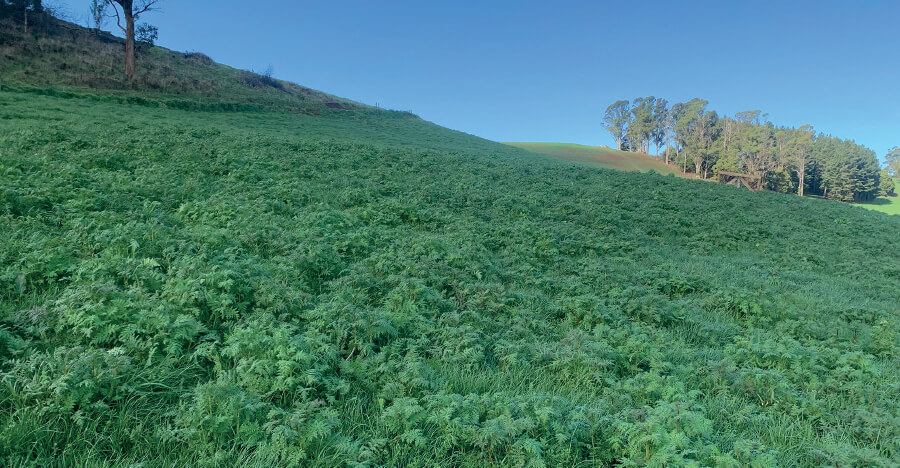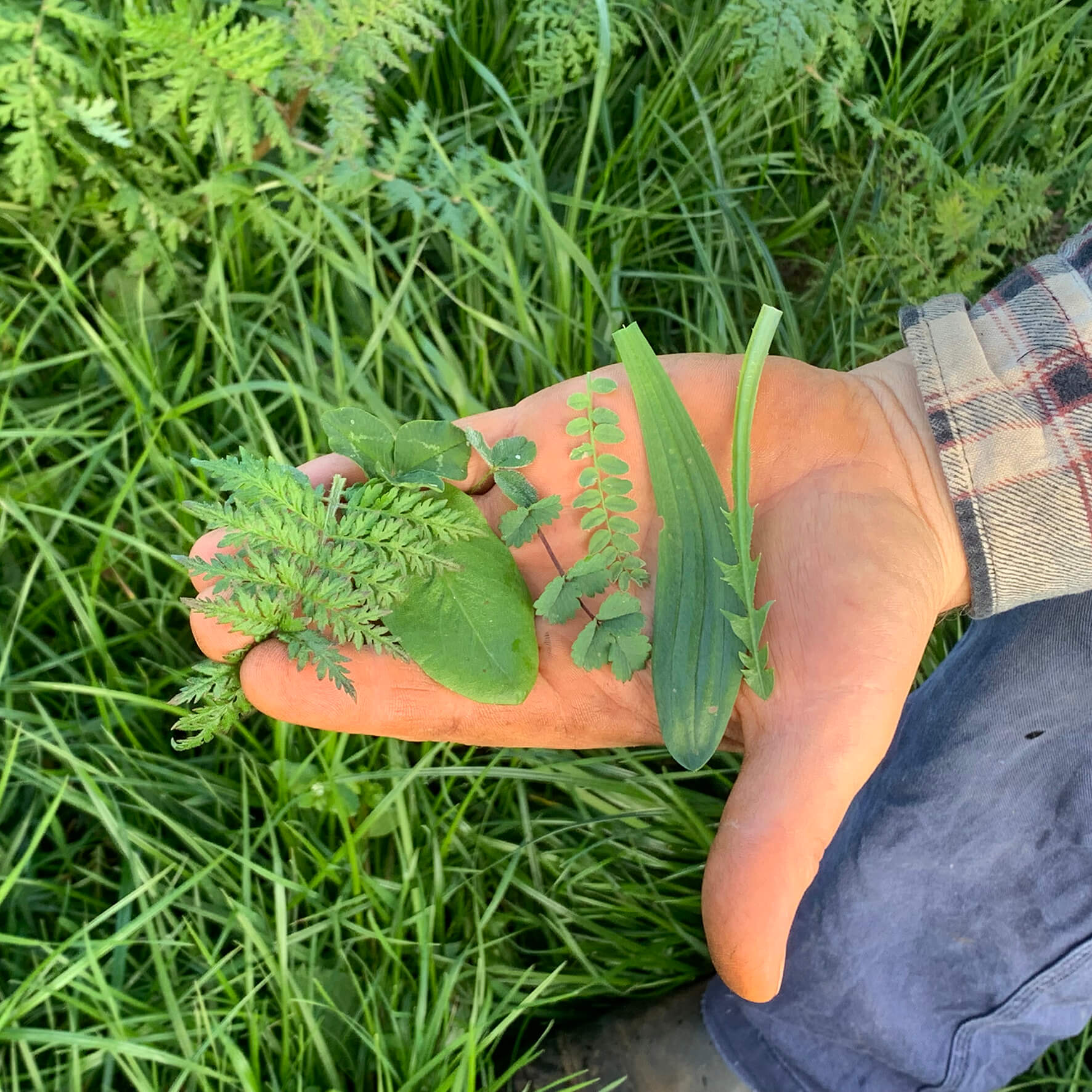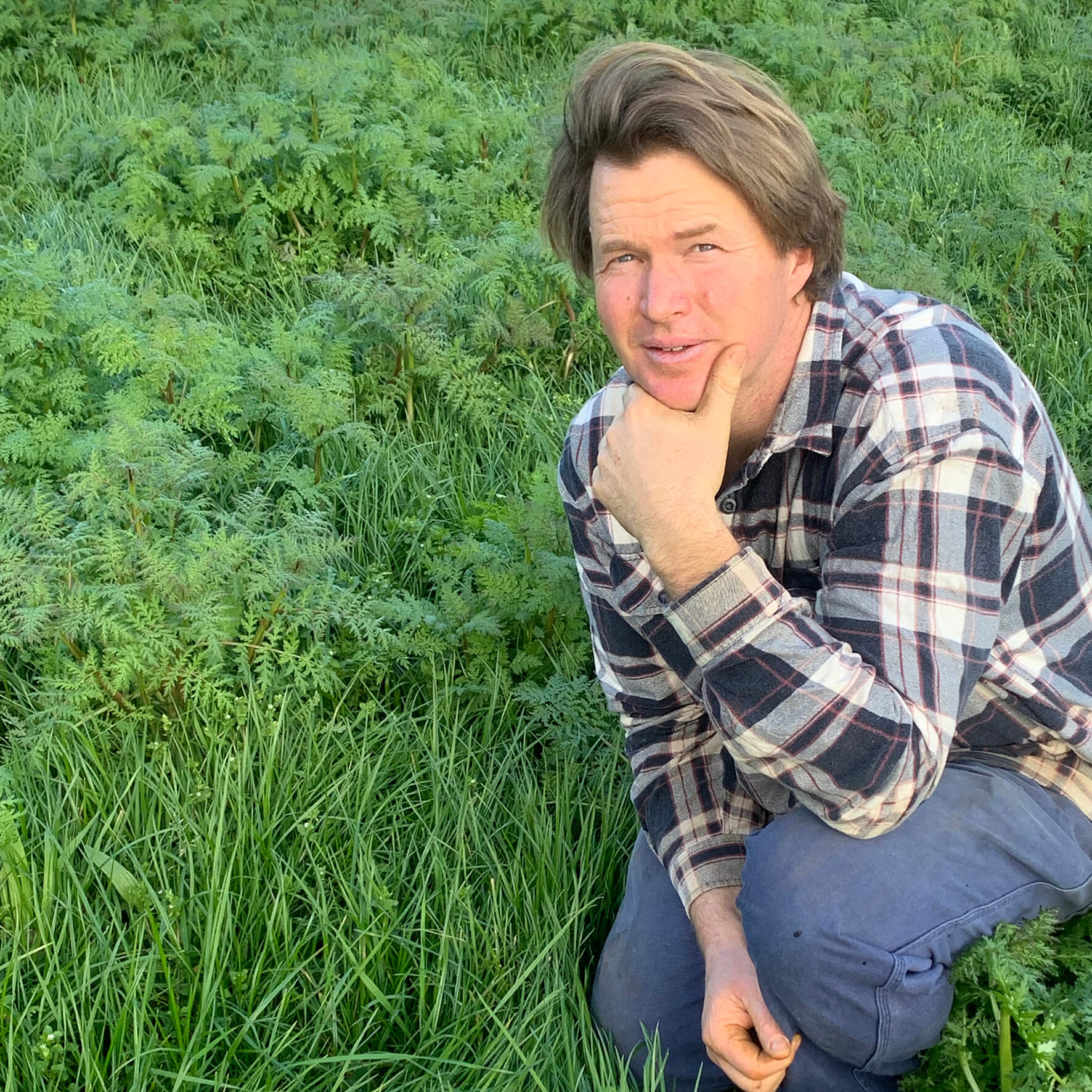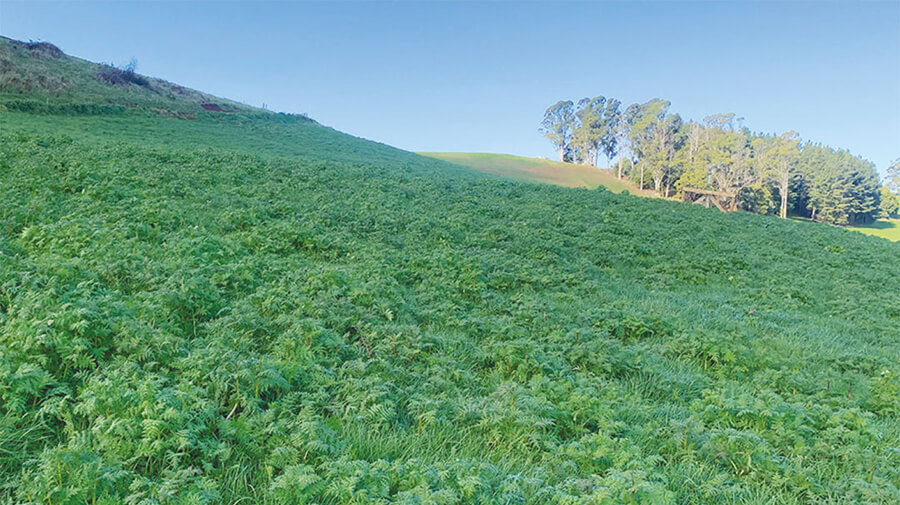
Latest
News
More pasture with less inputs – true!
If someone told you they were growing more pasture using no synthetic inputs, and saving a fortune in the process, would you believe them?
You should, as that’s exactly what one large-scale organic dairy operation in Tasmania has been doing for several years now. Mark and Roslyn’s transition from conventional practices to biological farming, and then to full organic certification, was completely unintentional at the start of their journey. They were just trying to solve the problem of milk fever occurring in the herd.


An organic smorgasboard – Dandelion, Plantain, Vetch, Sheeps Burnett, Red Clover, Chicory, Phacelia

Organic dairy farmer and soil health advocate, Mark
Through research and their own trials, they began to deeply understand the symbiotic relationship between healthy soil, healthy plants, and healthy animals, unconsciously embarking on a 10-year transition to organic certification.
The first challenge Mark said was changing their mindset – looking to do the same things as before but using different methods and inputs. It was a little confronting, unknown and therefore felt a bit risky.
“However, once you embrace change, you’re opened up to a world of new opportunities, new products you’ve never noticed before, and new ways to achieve what needs to be done,” said Mark.
Next was looking at the farm’s soil health and what was in balance and what wasn’t.
Their soil pH pre-transition was 5.6, which was addressed with lime and dolomite, and today it is sitting around 6.7 to 7.0. Phosphorus (P), sulphur (S) and calcium (Ca) imbalances were not overlooked, with Mark seeking a natural and sustainable alternative to conventional chemical P and S fertilisers. That is how Mark discovered the BioAgPhos solid fertiliser range, which is certified for organic use. It is a high-grade and highly reactive phosphate rock combined with BioAg’s proprietary microbial digesting agent. Mark opted for BioAg’s Superb blend as it included P, S and Ca and applied at the rate of 250kg/ha in biennial application.
“With a third of P, S and Ca immediately available and the other two-thirds sustainably and steadily released over a 2-3 year period, we’ve only needed to apply Superb every other year, which has saved us a lot in input, storage and application costs, and importantly time,” said Mark.
After implementing improvements below the ground to improve the soil health, Mark and Roslyn started to see significant improvements above the ground in both pasture health, yield and animal health.
“The pastures just bloomed with growth once we balanced the soil and got the pH above 6.5. The soil microbes love it, they are the ones that do the work for you, they are the ones that pull the nitrogen out of the air.
“Now we are growing more grass organically than we ever did conventionally, with a lot less inputs and greater biodiversity. The grass is greener, taller, and more robust with different plant species at different growth stages, and our cows are much healthier as a result.”
Mark
“Taking slightly longer has allowed us to do it at our own pace, understanding the process and appreciating the journey; for us it was win-win situation,“ Mark concluded.
Interview with Mark Lambert
Australian Farmers: Telling Our Story – ‘Accidentally Organic’ on Apple Podcasts.


Recent Comments